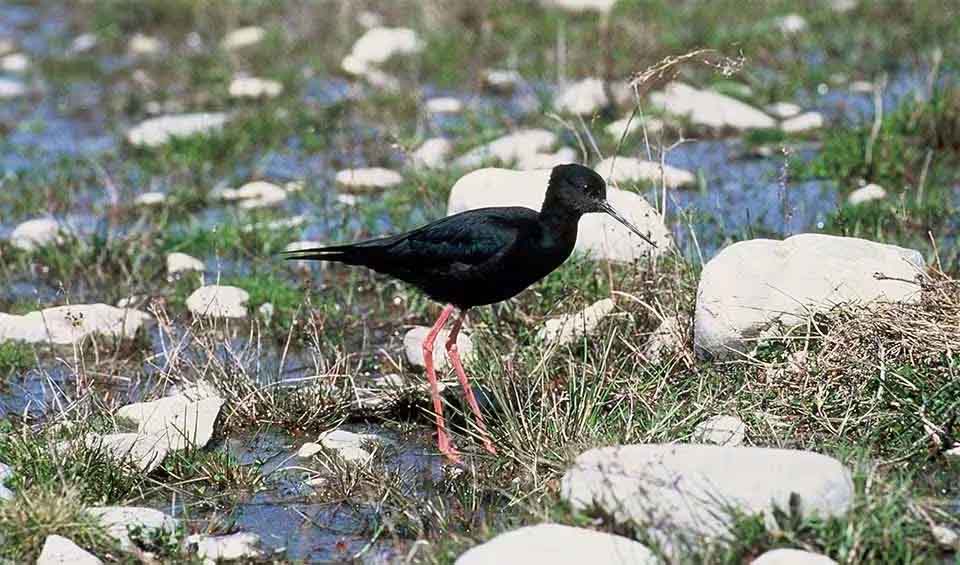The Black Stilt, also known as kakī in Mori, is a critically endangered wading bird endemic to New Zealand. With just 169 adults remaining in the wild as of May 2020, it stands as one of the rarest and most imperiled bird species globally. Recognized for its distinctive long, slender black beak, striking black plumage, and remarkably long pink legs, the Black Stilt cuts a striking figure against the backdrop of New Zealand’s scenic landscapes.
Historically, the Black Stilt inhabited the braided riverbeds and wetlands of the Mackenzie Basin on the South Island of New Zealand. However, its population has dramatically declined due to a myriad of threats, including predation by introduced species such as feral cats, ferrets, and hedgehogs. Additionally, habitat degradation stemming from human activities, such as the construction of hydropower dams and agricultural expansion, has further exacerbated the species’ decline. The spread of invasive vegetation, which alters the natural habitat structure and reduces suitable breeding and foraging grounds, poses yet another challenge to the survival of the Black Stilt in its native range.
In the 1940s, the Black Stilt population was estimated to be between 500 and 1000 individuals, underscoring the drastic decline that has occurred over the past century. Today, the species teeters on the edge of extinction, with its survival contingent upon the successful mitigation of ongoing threats and the implementation of effective conservation strategies.
Distribution
 New Zealand
New Zealand Official estimate
Official estimate
Anything we've missed?
Help us improve this page by suggesting edits. Glory never dies!
Suggest an editGet to know me
Terrestrial / Aquatic
Altricial / Precocial
Polygamous / Monogamous
Dimorphic / Monomorphic (size)
Active: Diurnal / Nocturnal
Social behavior: Solitary / Pack / Herd
Diet: Carnivore / Herbivore / Omnivore / Piscivorous / Insectivore
Migratory: Yes / No
Domesticated: Yes / No
Dangerous: Yes / No




